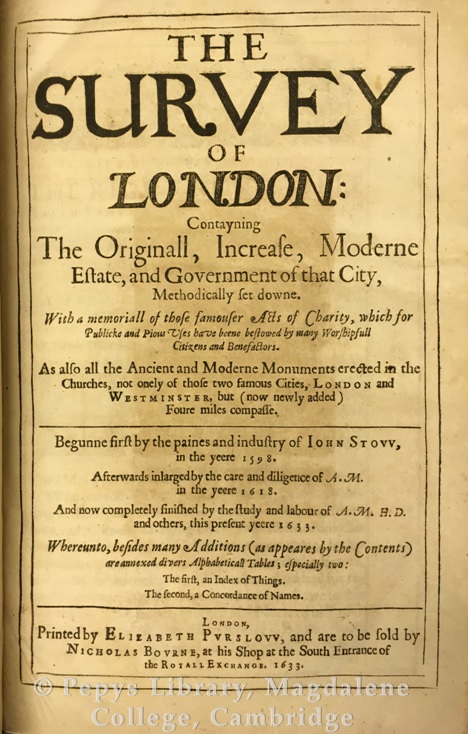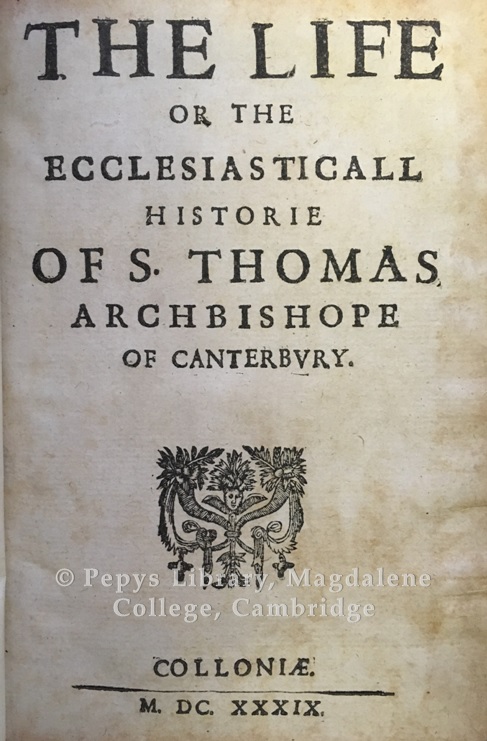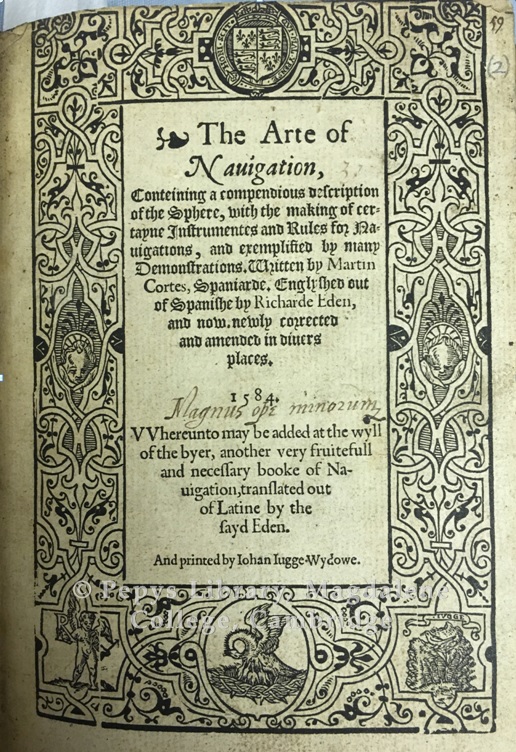Library and Archives
Women Printers
To celebrate International Women’s Day 2016 on the blog, we are showcasing the work of female printers of the 17th century in the Pepys Library.
In early modern England, the printing industry was not altogether a male preserve: between 1550 and 1650, it is estimated that 130 women in Britain were working actively in the printing trade. It was common for women printers to work alongside men in the printing houses of convents or with family members and spouses, and it was usual for them to marry within the trade. Amongst the books in Magdalene’s historic libraries, one can find the names of women printers on the imprints of title pages. Some are referred to by their marital status, such as ‘Widow Sayle’ ‘Widow of J. Blageart’ and the ‘widowe of Richarde Iugge’, others, by their full names such as Alice Norton, Elizabeth Purslowe, Mary Clark and Hannah Allen.
It is not coincidental that many female printers were described as widows on the printed title pages. As widows, women had the opportunity to control their own businesses and print books themselves, using their previous experience gained by working alongside their husbands. They usually took their husbands’ printer’s mark.
Here are a few examples of books printed by women in the Pepys Library:

Elizabeth Purslowe was particularly prolific in the trade. She ran her printing house for fourteen years in the early 17th century and published over 160 books.

The practice of women running printing houses was also apparent in Europe. Some were involved in the production of Catholic texts on the continent for clandestine distribution in Britain, such as Francoise Blageart, who worked in France. As was common in these kinds of texts, the imprint is false: it was in fact printed by Blageart in Paris.

A notable early-modern book to be printed by a woman is the 1584 edition of ‘The Arte of Nauigation’ by Martin Cortés and translated by Richard Eden, printed ‘by Iohan Iugge Wydowe’. Sir Francis Drake also owned a copy of this book, and used it to help him navigate around the world. Helen Smith writes of this publication:
The book is an elaborate production, with a decorative title-page and numerous diagrams, tables, and illustrations, including a fold-out map and volvelles. The material page is pushed to its limits in order to encompass the technologies of global exploration.
By Catherine Sutherland
Deputy Librarian, Pepys Library and Special Collections
Bibliography
Driver, Martha W. ‘Women Printers and the Page, 1477-1541’ Gutenberg-Jahrbuch vol. 73, 1998
Smith, H.: ‘Print[ing] your royal father off’ Early Modern Female Stationers and the Gendering of the British Book Trades’ in Hill, W.S. and Schillingsburg, P.L. (eds) Text: an interdisciplinary annual of Textual studies vol. 15. University of Michigan Press, 2002.
Smith, H. : ‘Grossly material things’: women and book production in early modern England. Oxford: Oxford University Press, 2012.